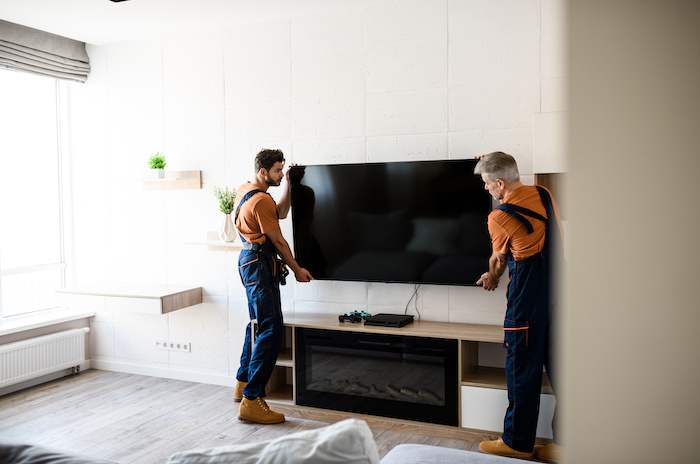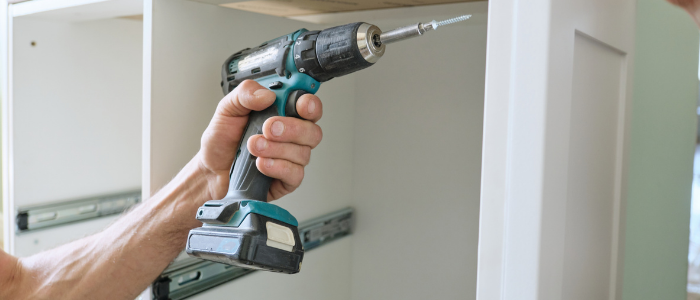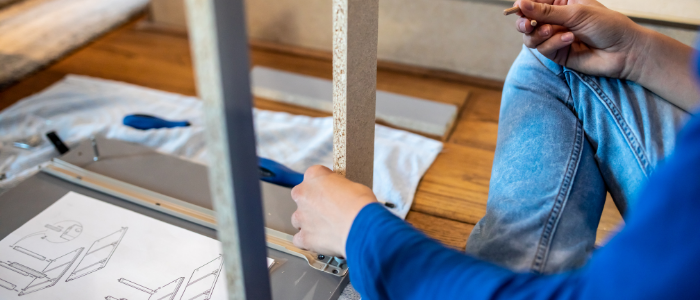
As a Loader, you should be ready to encounter different scenarios while assembling new items for customers. One thing that we can all agree on is that assembling furniture is a careful task and, in some cases, you may accidentally hurt yourself or damage walls and flooring.
While you should always refer to the instructions manual provided, these furniture assembly tips can help you put together furniture without damage while taking the least amount of time assembling, whether it’s in an office building, at the corner of a home, yard, or basement.
How to Assemble Any Furniture:
**Click to auto scroll by section

Gather Tools for Assembling Furniture
Assembling furniture yourself can be a challenging task but gathering a furniture assembly tool kit can make it less frustrating and help you get the job done quickly.
While you don’t need all of them, here are some basic tools for assembly you might want:
- A level
- A lightweight hammer
- Allen key and hex key
- Powered screwdriver
- Impact driver
- Rubber mallet
- Hexagonal bit set
- Touch up markers
- Box cutter
- Cordless drill
- Adjustable wrench
- Small claw hammer
Furniture Assembly Tips
Once you’ve gathered your tools for assembling furniture, use the following assembly tips to guide you whether you’re wondering how to assemble a chair, a couch, or other furniture.
1. Assemble In the Right Location
Ask customers where they’d like their furniture assembled to avoid having to move heavy pieces that can scratch floors or walls. For instance, if a customer places their dining table in the kitchen, double-check that they want it assembled there just to be sure.
2. Open the Box Carefully
Furniture boxes can include many different sized pieces. As you pull pieces out, do so gently so that no small piece is sent flying or pieces fall out of your hands and create chaos. As you assemble, you can protect flooring by folding and using the box as padding.

3. Carefully Read Instructions
Familiarzing yourself with the steps will make the assembly easier and faster. Make sure you follow every step and don’t rush or skip sections to avoid mistakes that would be difficult to undo. Keep the instructions booklet close by or on your phone to save you stress.
4. Unpack & Lay Pieces Out In Order
Unpack everything and lay the tools, fixings, and pieces in order of assembly on the floor or a flat surface like a table (remember to cover the table to avoid scratching it). Doing so helps determine if parts are missing and confirms that you have the right tools with you.
🤑 Don’t forget: Loaders can receive extra payouts by practicing good customer service skills.
5. Be Aware of Your Surroundings
Avoid accidents by carefully assessing your surroundings, especially if you have heavy, tall, and bulky pieces such as wall cabinets or wardrobes. You can anchor some of these pieces to the wall using braces, straps, or brackets. Also, when dealing with large pieces, ask for assistance from your helper — one can hold things in place while the other secures them.
6. Measure Carefully
Remember to measure the dimensions of the space you intend to place your furniture. For the large pieces, this will help to avoid any surprises once you’ve already assembled the whole piece. Additionally, this helps to calculate how big your working area is.
7. Avoid Common Furniture Assembly Mistakes
Smashing your thumb: Hammers can have a life of their own sometimes. To avoid getting injured, you can use a thumb saver to hold nails, staples, and screws.
Splitting wood as you drive in a nail: Placing masking tape on the wood can help to avoid splitting wood. You can then peel it off once the nail is in.
Gaps on areas where edges should meet evenly: Avoid tightening the hardware before you have all the pieces together to avoid these pesky gaps.
Damaging the pre-made holes: If the furniture has pre-made holes, use a rubber mallet instead of a hammer to avoid damages.
Tightening screws individually: Before tightening, start by placing all of the screws into the panel and then tighten them all at once.

Throw Out Leftover Trash & Cleanup
Once you complete assembling furniture, make sure you leave the customer’s property as clean or better than you found it. Recycle the cardboard box and papers, throw packing peanuts and lining away to leave your working area looking neat for a job well done.


